Global Bi-ventricular endocardial distribution of activation rate during long duration ventricular fibrillation in normal and heart failure canines
- PMID: 28407744
- PMCID: PMC5390480
- DOI: 10.1186/s12872-017-0530-5
Global Bi-ventricular endocardial distribution of activation rate during long duration ventricular fibrillation in normal and heart failure canines
Abstract
Background: The objective of this study was to detect differences in the distribution of the left and right ventricle (LV & RV) activation rate (AR) during short-duration ventricular fibrillation (SDVF, <1 min) and long-duration ventricular fibrillation VF (LDVF, >1 min) in normal and heart failure (HF) canine hearts.
Methods: Ventricular fibrillation (VF) was electrically induced in six healthy dogs (control group) and six dogs with right ventricular pacing-induced congestive HF (HF group). Two 64-electrode basket catheters deployed in the LV and RV were used for global endocardium electrical mapping. The AR of VF was estimated by fast Fourier transform analysis from each electrode.
Results: In the control group, the LV was activated faster than the RV in the first 20 s, after which there was no detectable difference in the AR between them. When analyzing the distribution of the AR within the bi-ventricles at 3 min of LDVF, the posterior LV was activated fastest, while the anterior was slowest. In the HF group, a detectable AR gradient existed between the two ventricles within 3 min of VF, with the LV activating more quickly than the RV. When analyzing the distribution of the AR within the bi-ventricles at 3 min of LDVF, the septum of the LV was activated fastest, while the anterior was activated slowest.
Conclusions: A global bi-ventricular endocardial AR gradient existed within the first 20 s of VF but disappeared in the LDVF in healthy hearts. However, the AR gradient was always observed in both SDVF and LDVF in HF hearts. The findings of this study suggest that LDVF in HF hearts can be maintained differently from normal hearts, which accordingly should lead to the development of different management strategies for LDVF resuscitation.
Keywords: Activation Rate; Heart Failure; Ventricular Fibrillation.
Figures
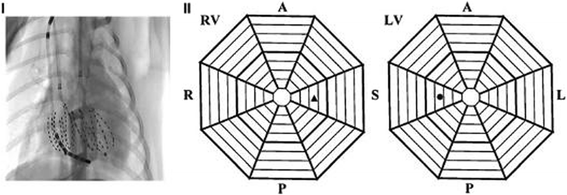
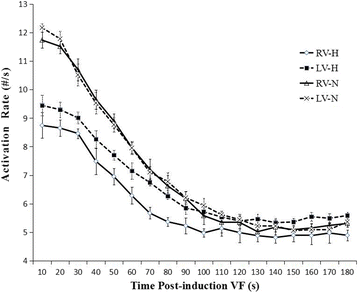
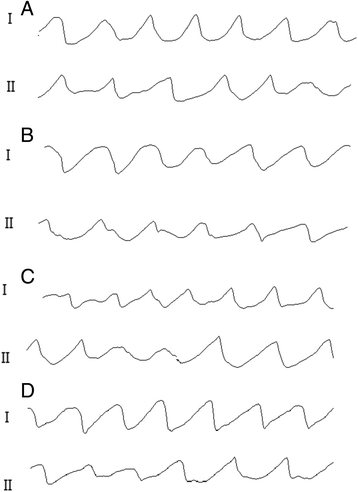
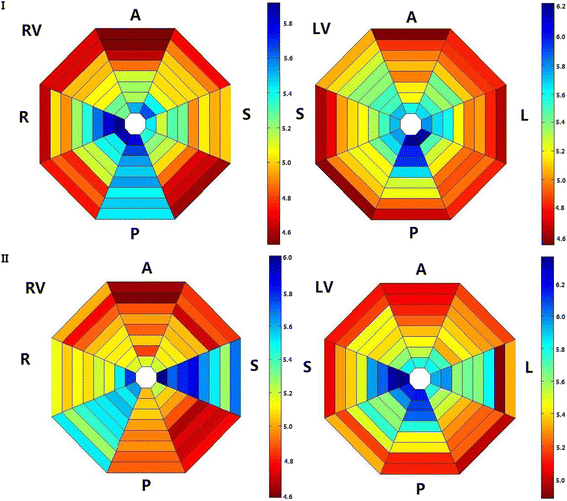
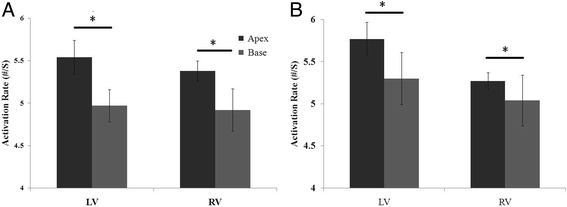
Similar articles
-
Complex structure of electrophysiological gradients emerging during long-duration ventricular fibrillation in the canine heart.Am J Physiol Heart Circ Physiol. 2010 Nov;299(5):H1405-18. doi: 10.1152/ajpheart.00419.2010. Epub 2010 Aug 27. Am J Physiol Heart Circ Physiol. 2010. PMID: 20802138 Free PMC article.
-
Effect of flunarizine on defibrillation outcomes and early refibrillation in a canine model of prolonged ventricular fibrillation.Exp Physiol. 2019 Nov;104(11):1630-1637. doi: 10.1113/EP087068. Epub 2019 Oct 9. Exp Physiol. 2019. PMID: 31465138 Free PMC article.
-
Defibrillation threshold varies during different stages of ventricular fibrillation in canine hearts.Heart Lung Circ. 2013 Feb;22(2):133-40. doi: 10.1016/j.hlc.2012.08.059. Epub 2012 Sep 27. Heart Lung Circ. 2013. PMID: 23021977
-
Our search for the porcine mother rotor.Ann Noninvasive Electrocardiol. 2005 Oct;10(4 Suppl):7-15. doi: 10.1111/j.1542-474X.2005.00071.x. Ann Noninvasive Electrocardiol. 2005. PMID: 16274411 Free PMC article. Review.
-
Does cardiac resynchronisation therapy improve survival and quality of life in patients with end-stage heart failure?Interact Cardiovasc Thorac Surg. 2008 Dec;7(6):1141-6. doi: 10.1510/icvts.2008.183707. Epub 2008 Jun 9. Interact Cardiovasc Thorac Surg. 2008. PMID: 18541605 Review.
References
Publication types
MeSH terms
LinkOut - more resources
Full Text Sources
Other Literature Sources
Medical
Research Materials
Miscellaneous

